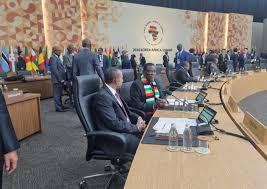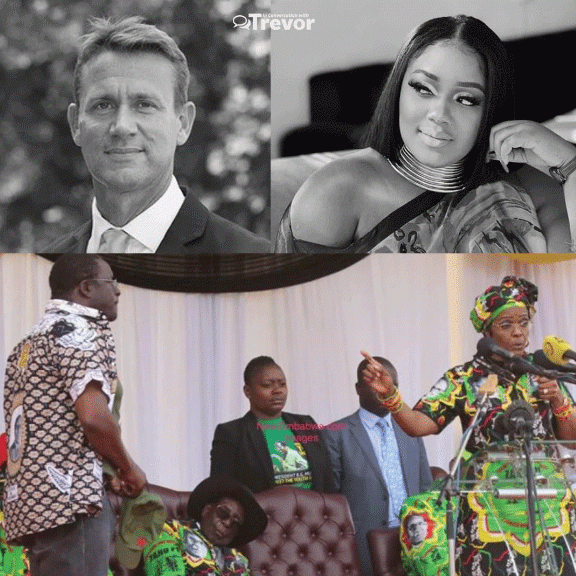
THE recently concluded Korea-Africa Summit gave lots of insights into how African governments plan for development.
Tanzania and Kenya proved the advantages of well-planned execution of plans, while Zimbabwe had no tangible plan except holding talks about talks on development.
The Korea-Africa Summit is a continuation of other summits by developed countries with the developing continent. We have, in the past, witnessed summits such as China-Africa, Russia-Africa, EU-Africa, Japan-Africa, France-Africa and the US-Africa, to mention but a few.
These summits are about how these powers can have mutual developmental projects with Africa.
However, the reality is these summits are about how these powers can access cheap African commodities for their industries or organic foods for their citizens.
China has a very interesting project The Belt and Road Initiative a project that aims to develop the roads, railways and port facilities through Eastern Europe and Africa to facilitate smoother and efficient trade between these countries and China.
This fits lock, stock and barrel into Walter Rodney’s seminal book How Europe Underdeveloped Africa, where he correctly posited that “all roads and railways led to the sea”.
Some may ask, why to the sea? It was a route to transport raw materials to the colonial powers. Interestingly, these roads and railways were not meant to connect African countries or increase intra-Africa trade.
- Corruption Watch: Get scared, 2023 is coming
- Corruption Watch: Get scared, 2023 is coming
- Letters: Ensuring Africa’s food security through availability of quality seeds
- Is military's involvement in politics compatible with democracy?
Keep Reading
Developmental economist Andre Gunder Frank added to this body of knowledge when he developed the metropolis-satellite development theory.
Frank said that over the course of history, this chain of exploitation in the form of a “metropolis-satellite” relationship has been maintained so that resources continue to be taken from satellites and feed back to the dominant metropolis.
African States were seen as satellites to the metropole colonial powers just as much as African cities are metropoles to rural communities.
It is sickening how 54 independent African States are ritually summoned by metropoles for summits and never the reverse. One does not need rocket science to understand that the host or initiator of the summit lays down the agenda.
Africa is merely seen as participants at these summits and a few African States get the deals mainly commodities trade or nominal infrastructural development loans, which are also tied to natural resource supplies to the lender.
For a moment, let us look at Kenya and Tanzania the two African States that came back from the South Korea-Africa Summit with tangible results.
Kenya Presidential Communication Services released a statement that said Kenya and South Korea had signed a US$485 million concessional development funding on the sidelines of the Korea-Africa Summit.
The money includes US$238 million for the implementation of the Konza Digital Media City Project.
It quoted President William Ruto as saying the project would boost Kenya’s digital ecosystem, a key government initiative aimed at expanding digital and creative economy opportunities for the young people of Kenya, at the Konza Technopolis.
On Tanzania’s signed deals, Zimbabwean financial reporter and communication expert Ranga Mberi posted on X: “At the Korea-Africa summit, Tanzania signed a deal for US$2,5 billion concessional loans for infrastructure. Plus, a deal for ocean resources and minerals used in clean energy such as nickel, lithium and graphite.”
A quick search online shows that the other notable country that concluded deals was South Africa.
Kenya seems to be in its own league of running with the hares and hunting with the hounds.
Recently, it concluded debt restructuring deals in the United States. It has managed to benefit from both the East and West in its endeavour to develop.
The Chinese have funded the 400km Standard Gauge railway from Nairobi to the coastal city of Mombasa.
Why are these countries, including South Africa, attractive to such funding? Yes, it has to do more with geo-politics, but it also has to be given to their leaders who have a clear mind of what they want to extract or gain from these summits. They go to the summits with a plan.
Zimbabwe, on the other hand, summit after summit comes back with memorandums of understanding (MoUs). Many a time, the MoUs die a natural death on the shelves at Munhumutapa without being implemented.
Zimbabwe has attended all the summits from Russia, France, the EU, the US and China, but has little to show for it.
Probably, it’s time that we should relook at National Development Strategy (NDS) 1 and NDS2, the economic blueprints that were introduced by President Emmerson Mnangagwa administration in 2018 soon after he won the disputed presidential elections.
The central theme of the blueprints is making Zimbabwe an upper-middle-income economy by 2030.
However, discussion on what are the qualitative indicators of the project is not widespread. The blueprints seem more interested in the quantitative matrix, and on that note: the growth of GDP to US$100 billion.
Very little has been spoken on what social change that upper-middle-income status brings to the people. How many artisans will be produced? How many doctors? How many engineers? How many children will be in school? How many people will have easy access to a doctor? How many roads will be built? How many households will be food secure and have access to potable water?
These are hard questions that seem to fly above the heads of the current administration, whose projects are simply tied to their terms of office. Why can't Zimbabwe have a vision 2050 that has a lifespan of six presidential terms? The short answer is we have selfish leaders who don’t see Zimbabwe beyond the end of their natural lives.
Mnangagwa and his administration are perfecting the art of muddling through, just getting into the next year and then the next and bang, we have another election.
That is why he and his Zanu PF party had the temerity of not producing a manifesto as Zimbabwe went into 2023 general elections.
This has to stop and stop now. Leaders have not only to start thinking beyond their terms, but to also start to implement agreed policies to their logical end in the shortest possible time-frames.
Anything other than that, will see Zimbabwe continue celebrating MoUs rather than tangible projects.
- Paidamoyo Muzulu is a journalist based in Harare. He writes here in his personal capacity.











